Do you have a question about the Roland VR-09 and is the answer not in the manual?
Describes the three main sound engines: organ, piano, and synthesizer, and how they can be played.
Explains how to apply effects and rotary speaker simulation to the sounds.
Details storing and recalling sound and effect settings as combinations called 'registrations'.
Outlines the functions of the drum section, including playing drum sounds and rhythm patterns.
Describes the function and usage of the USB memory port for saving and loading data.
Explains the D-BEAM controller's operation for modifying sound and producing effects.
Details the knobs for adjusting effects like Overdrive, Tone, Compressor, MFX, Delay, and Reverb.
Describes controls for selecting and modifying organ sounds, including harmonic bars and percussion.
Explains the MODE buttons for selecting Organ, Piano, and Synthesizer sounds individually.
Describes piano sound selection, variations, and volume adjustment.
Details synthesizer sound selection, variations, and volume adjustment.
Describes controls for storing and recalling favorite sound settings.
Details controls for selecting drum kits, rhythm patterns, and songs.
Details the overall volume knob and the pitch bend/modulation lever.
Explains the buttons for activating and changing the speed of the rotary speaker effect.
Details audio, MIDI, pedal, and expression pedal connections on the rear panel.
Explains the DC IN jack for power and the USB COMPUTER port for MIDI data transmission.
Guides on inserting Ni-MH batteries for portable operation and battery replacement.
Explains how to attach the ferrite core to the USB cable for noise prevention (VR-730 only).
Step-by-step guide for turning the unit's power on and off safely.
Details the automatic power-off feature and how to manage it.
Instructions on how to play and stop the unit's demo songs.
Explains the use of the included USB memory protector for preventing theft.
Explains how to select individual organ, piano, and synthesizer sounds using mode buttons.
Details the process of selecting organ sounds and variations using the TYPE button.
Guides on selecting piano and electric piano sounds and variations using the VALUE dial.
Explains how to adjust organ sound variations using the TYPE button and VALUE dial.
Describes how to select different piano sound variations using the VALUE dial.
Guides on selecting synthesizer sounds and their variations using sound buttons.
Explains how to adjust synthesizer sound variations using the VALUE dial.
Explains how to assign names and store favorite sound combinations as registrations.
Guides on selecting and recalling stored registrations using bank and number buttons.
Instructions for navigating and selecting different registration banks (1-4 and 5-25).
Details the process of selecting settings, naming, and storing a new registration.
Guides on selecting drum kits and their sound assignments for the keyboard.
Explains how to shape organ sounds by adjusting harmonic bars for different footages.
Guides on enabling and adjusting the percussion effect for organ sounds.
Details how to apply vibrato and chorus effects to enhance organ sounds.
Explains how to activate and control the rotary speaker simulation effect.
Guides on modifying the sound's volume over time using ATTACK, DECAY, and RELEASE parameters.
Explains how to adjust the tonal character using CUTOFF and RESONANCE filter parameters.
Introduces the unit's effect processors and how to apply them to sounds.
Details how global control optimizes multiple effect parameters with single knobs.
Describes the function of individual effect knobs like Overdrive, Tone, Compressor, MFX, Delay, Reverb.
Explains how to use hand movements to control pitch, effects, and functions.
Guides on selecting sound effects or functions to be controlled by the D-BEAM.
Details the operational range and sensitivity factors of the D-BEAM controller.
Explains how to use the lever to bend pitch and apply modulation effects.
Guides on enabling and adjusting the portamento effect for smooth pitch transitions.
Details how to specify the duration of the portamento effect.
Explains how to adjust the keyboard pitch in steps of one octave using OCTAVE buttons.
Guides on transposing the keyboard pitch and setting the middle C reference.
Explains how to layer two sounds simultaneously for a richer sound.
Guides on layering an organ sound with piano or synthesizer sounds.
Details how to select and adjust the volume and octave for layered sounds.
Explains how to cancel the dual sound setting.
Explains how to split the keyboard to play different sounds with the left and right hands.
Guides on splitting layered sounds to the upper and lower keyboard regions.
Details how to layer two organ sounds and adjust their harmonic bars.
Guides on layering piano and synthesizer sounds and adjusting their settings.
Explains how to combine organ sounds with piano or synthesizer sounds.
Details how to change the sounds, volume, and octaves of individual parts in a split setting.
Guides on playing drum sounds in the lower keyboard part while using another sound in the upper part.
Explains how to change the point at which the keyboard is divided for split settings.
Guides on how to cancel the split keyboard setting.
Instructions on how to select and play the unit's built-in rhythm patterns.
Guides on setting and adjusting the tempo for rhythm patterns and tempo-synced effects.
Explains how to adjust the volume of drum sounds, sound effects, and playback.
Details the differences between SMF and audio recording formats.
Guides on connecting a USB drive, selecting rhythm patterns, and setting up for recording.
Step-by-step instructions for initiating and ending the recording process.
Explains how to name and save recorded songs to a USB flash drive.
Guides on selecting and playing back songs saved on a USB flash drive.
Details the procedure for renaming saved songs on the USB flash drive.
Explains how to delete songs from the USB flash drive.
Lists the types of data (songs, phrases, registrations) that can be saved on a USB flash drive.
Guides on copying and playing SMF/audio files from a computer to the unit via USB.
Step-by-step guide for entering record-standby, recording, and stopping the looper.
Explains how to layer performances onto the loop playback for overdubbing.
Guides on recording looper phrases while a rhythm pattern plays in the background.
Explains how to load audio files from a USB drive for looper playback or recording.
Guides on clearing stored phrases from the looper memory.
Details how to name and save recorded looper phrases as audio data to a USB drive.
Explains the auto power-off feature and how to enable or disable it.
Guides on saving all stored registrations as a set to a USB flash drive.
Explains how to load entire sets of saved registrations from a USB flash drive.
Guides on loading individual registrations from a USB flash drive to specific slots.
Details the process of formatting a USB flash drive for use with the unit.
Explains how to reset synthesizer sound parameters to their factory default settings.
Guides on restoring all unit settings to their original factory condition.
Explains how to access and edit various settings via the menu system.
Lists the key specifications for the Roland V-Combo VR-09 model.
Lists the key specifications for the Roland V-Combo VR-730 model.
Provides critical safety warnings regarding power supply, stand usage, and placement.
Details precautions for handling the unit, preventing finger pinching, and keeping items away from children.
Covers important notes on battery use, placement, cleaning, data backup, and display care.
Explains legal rights regarding copyrighted works and product content usage.
Describes the three main sound engines: organ, piano, and synthesizer, and how they can be played.
Explains how to apply effects and rotary speaker simulation to the sounds.
Details storing and recalling sound and effect settings as combinations called 'registrations'.
Outlines the functions of the drum section, including playing drum sounds and rhythm patterns.
Describes the function and usage of the USB memory port for saving and loading data.
Explains the D-BEAM controller's operation for modifying sound and producing effects.
Details the knobs for adjusting effects like Overdrive, Tone, Compressor, MFX, Delay, and Reverb.
Describes controls for selecting and modifying organ sounds, including harmonic bars and percussion.
Explains the MODE buttons for selecting Organ, Piano, and Synthesizer sounds individually.
Describes piano sound selection, variations, and volume adjustment.
Details synthesizer sound selection, variations, and volume adjustment.
Describes controls for storing and recalling favorite sound settings.
Details controls for selecting drum kits, rhythm patterns, and songs.
Details the overall volume knob and the pitch bend/modulation lever.
Explains the buttons for activating and changing the speed of the rotary speaker effect.
Details audio, MIDI, pedal, and expression pedal connections on the rear panel.
Explains the DC IN jack for power and the USB COMPUTER port for MIDI data transmission.
Guides on inserting Ni-MH batteries for portable operation and battery replacement.
Explains how to attach the ferrite core to the USB cable for noise prevention (VR-730 only).
Step-by-step guide for turning the unit's power on and off safely.
Details the automatic power-off feature and how to manage it.
Instructions on how to play and stop the unit's demo songs.
Explains the use of the included USB memory protector for preventing theft.
Explains how to select individual organ, piano, and synthesizer sounds using mode buttons.
Details the process of selecting organ sounds and variations using the TYPE button.
Guides on selecting piano and electric piano sounds and variations using the VALUE dial.
Explains how to adjust organ sound variations using the TYPE button and VALUE dial.
Describes how to select different piano sound variations using the VALUE dial.
Guides on selecting synthesizer sounds and their variations using sound buttons.
Explains how to adjust synthesizer sound variations using the VALUE dial.
Explains how to assign names and store favorite sound combinations as registrations.
Guides on selecting and recalling stored registrations using bank and number buttons.
Instructions for navigating and selecting different registration banks (1-4 and 5-25).
Details the process of selecting settings, naming, and storing a new registration.
Guides on selecting drum kits and their sound assignments for the keyboard.
Explains how to shape organ sounds by adjusting harmonic bars for different footages.
Guides on enabling and adjusting the percussion effect for organ sounds.
Details how to apply vibrato and chorus effects to enhance organ sounds.
Explains how to activate and control the rotary speaker simulation effect.
Guides on modifying the sound's volume over time using ATTACK, DECAY, and RELEASE parameters.
Explains how to adjust the tonal character using CUTOFF and RESONANCE filter parameters.
Introduces the unit's effect processors and how to apply them to sounds.
Details how global control optimizes multiple effect parameters with single knobs.
Describes the function of individual effect knobs like Overdrive, Tone, Compressor, MFX, Delay, Reverb.
Explains how to use hand movements to control pitch, effects, and functions.
Guides on selecting sound effects or functions to be controlled by the D-BEAM.
Details the operational range and sensitivity factors of the D-BEAM controller.
Explains how to use the lever to bend pitch and apply modulation effects.
Guides on enabling and adjusting the portamento effect for smooth pitch transitions.
Details how to specify the duration of the portamento effect.
Explains how to adjust the keyboard pitch in steps of one octave using OCTAVE buttons.
Guides on transposing the keyboard pitch and setting the middle C reference.
Explains how to layer two sounds simultaneously for a richer sound.
Guides on layering an organ sound with piano or synthesizer sounds.
Details how to select and adjust the volume and octave for layered sounds.
Explains how to cancel the dual sound setting.
Explains how to split the keyboard to play different sounds with the left and right hands.
Guides on splitting layered sounds to the upper and lower keyboard regions.
Details how to layer two organ sounds and adjust their harmonic bars.
Guides on layering piano and synthesizer sounds and adjusting their settings.
Explains how to combine organ sounds with piano or synthesizer sounds.
Details how to change the sounds, volume, and octaves of individual parts in a split setting.
Guides on playing drum sounds in the lower keyboard part while using another sound in the upper part.
Explains how to change the point at which the keyboard is divided for split settings.
Guides on how to cancel the split keyboard setting.
Instructions on how to select and play the unit's built-in rhythm patterns.
Guides on setting and adjusting the tempo for rhythm patterns and tempo-synced effects.
Explains how to adjust the volume of drum sounds, sound effects, and playback.
Details the differences between SMF and audio recording formats.
Guides on connecting a USB drive, selecting rhythm patterns, and setting up for recording.
Step-by-step instructions for initiating and ending the recording process.
Explains how to name and save recorded songs to a USB flash drive.
Guides on selecting and playing back songs saved on a USB flash drive.
Details the procedure for renaming saved songs on the USB flash drive.
Explains how to delete songs from the USB flash drive.
Lists the types of data (songs, phrases, registrations) that can be saved on a USB flash drive.
Guides on copying and playing SMF/audio files from a computer to the unit via USB.
Step-by-step guide for entering record-standby, recording, and stopping the looper.
Explains how to layer performances onto the loop playback for overdubbing.
Guides on recording looper phrases while a rhythm pattern plays in the background.
Explains how to load audio files from a USB drive for looper playback or recording.
Guides on clearing stored phrases from the looper memory.
Details how to name and save recorded looper phrases as audio data to a USB drive.
Explains the auto power-off feature and how to enable or disable it.
Guides on saving all stored registrations as a set to a USB flash drive.
Explains how to load entire sets of saved registrations from a USB flash drive.
Guides on loading individual registrations from a USB flash drive to specific slots.
Details the process of formatting a USB flash drive for use with the unit.
Explains how to reset synthesizer sound parameters to their factory default settings.
Guides on restoring all unit settings to their original factory condition.
Explains how to access and edit various settings via the menu system.
Lists the key specifications for the Roland V-Combo VR-09 model.
Lists the key specifications for the Roland V-Combo VR-730 model.
Provides critical safety warnings regarding power supply, stand usage, and placement.
Details precautions for handling the unit, preventing finger pinching, and keeping items away from children.
Covers important notes on battery use, placement, cleaning, data backup, and display care.
Explains legal rights regarding copyrighted works and product content usage.
| Keyboard | 61 keys (with velocity) |
|---|---|
| Polyphony | 128 voices |
| Phones Jack | Stereo 1/4-inch phone type |
| External Input Jack | Stereo miniature phone type |
| Mic Input Jack | 1/4-inch phone type |
| Power Supply | AC adaptor |
| Sound Generator | SuperNATURAL Synth |
| Effects | Reverb, Rotary, Compressor |
| Display | Graphic LCD (128 x 64 dots) |
| Connectivity | USB, MIDI |
| Output Connectors | L/Mono, R (1/4-inch phone type) |
| PK IN Jack | 1/4-inch phone type |
| USB Ports | USB COMPUTER port: USB Type A USB MEMORY port: USB Type A |
| Dimensions | 1008 (W) x 300 (D) x 106 (H) mm; 39-11/16 (W) x 11-13/16 (D) x 4-3/16 (H) inches |
| Weight | 5.5 kg |


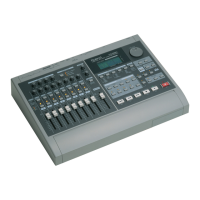



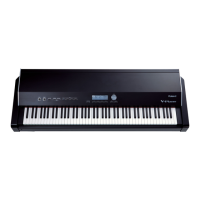
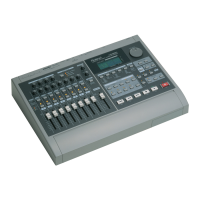
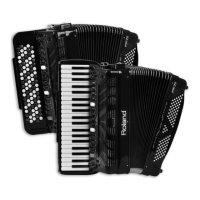
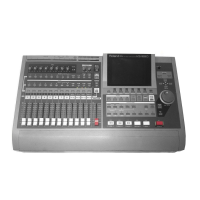
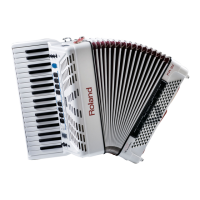
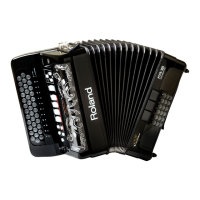
